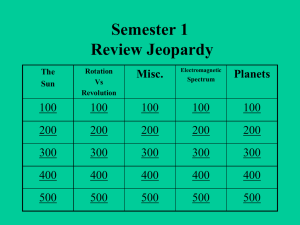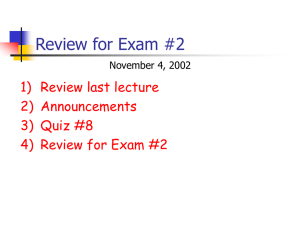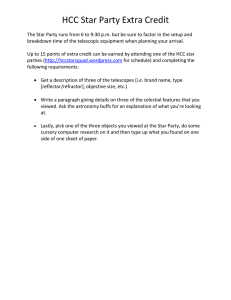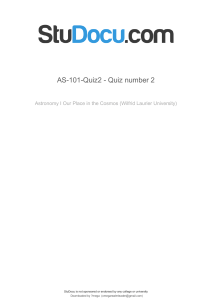Astronomy Assignment: Stars, Planets, and Celestial Mechanics
advertisement
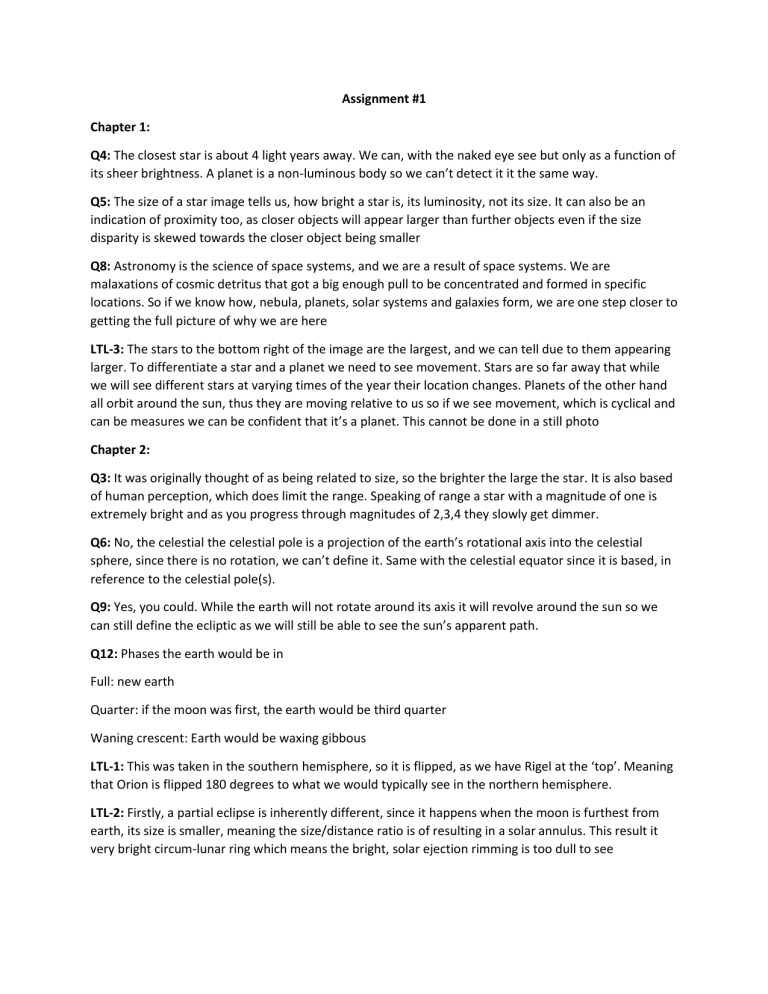
Assignment #1 Chapter 1: Q4: The closest star is about 4 light years away. We can, with the naked eye see but only as a function of its sheer brightness. A planet is a non-luminous body so we can’t detect it it the same way. Q5: The size of a star image tells us, how bright a star is, its luminosity, not its size. It can also be an indication of proximity too, as closer objects will appear larger than further objects even if the size disparity is skewed towards the closer object being smaller Q8: Astronomy is the science of space systems, and we are a result of space systems. We are malaxations of cosmic detritus that got a big enough pull to be concentrated and formed in specific locations. So if we know how, nebula, planets, solar systems and galaxies form, we are one step closer to getting the full picture of why we are here LTL-3: The stars to the bottom right of the image are the largest, and we can tell due to them appearing larger. To differentiate a star and a planet we need to see movement. Stars are so far away that while we will see different stars at varying times of the year their location changes. Planets of the other hand all orbit around the sun, thus they are moving relative to us so if we see movement, which is cyclical and can be measures we can be confident that it’s a planet. This cannot be done in a still photo Chapter 2: Q3: It was originally thought of as being related to size, so the brighter the large the star. It is also based of human perception, which does limit the range. Speaking of range a star with a magnitude of one is extremely bright and as you progress through magnitudes of 2,3,4 they slowly get dimmer. Q6: No, the celestial the celestial pole is a projection of the earth’s rotational axis into the celestial sphere, since there is no rotation, we can’t define it. Same with the celestial equator since it is based, in reference to the celestial pole(s). Q9: Yes, you could. While the earth will not rotate around its axis it will revolve around the sun so we can still define the ecliptic as we will still be able to see the sun’s apparent path. Q12: Phases the earth would be in Full: new earth Quarter: if the moon was first, the earth would be third quarter Waning crescent: Earth would be waxing gibbous LTL-1: This was taken in the southern hemisphere, so it is flipped, as we have Rigel at the ‘top’. Meaning that Orion is flipped 180 degrees to what we would typically see in the northern hemisphere. LTL-2: Firstly, a partial eclipse is inherently different, since it happens when the moon is furthest from earth, its size is smaller, meaning the size/distance ratio is of resulting in a solar annulus. This result it very bright circum-lunar ring which means the bright, solar ejection rimming is too dull to see


